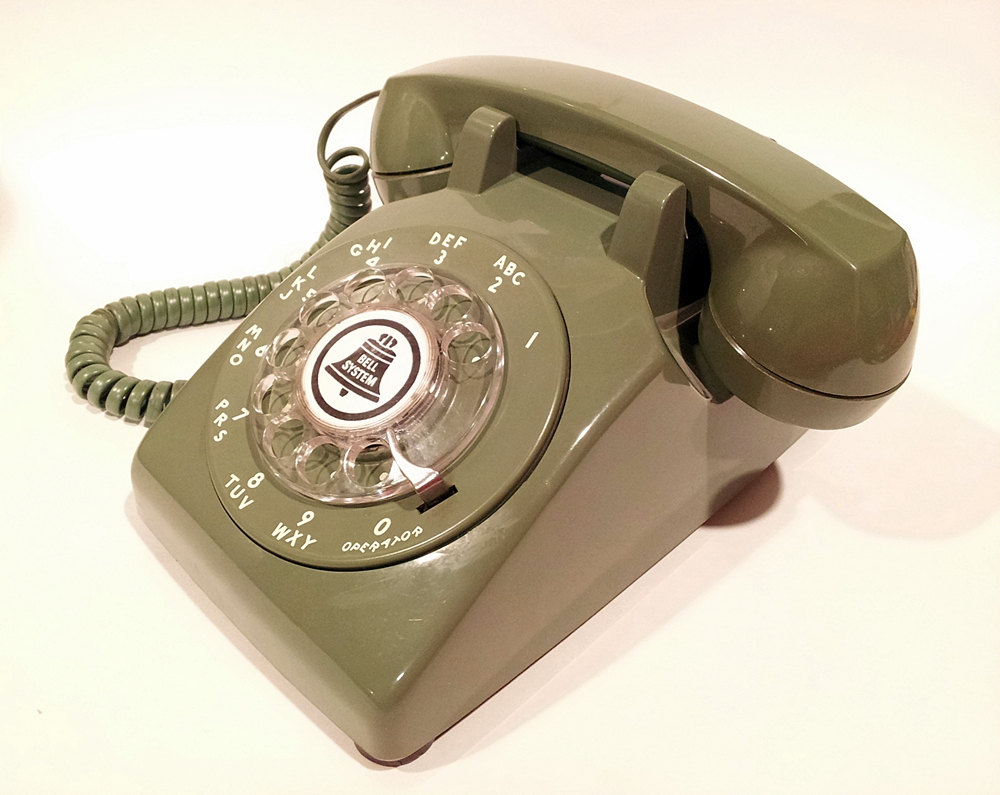3 ways to use the old-school phone to enrich learning

One of the oldest forms of mobile social networking is the old-school phone call. Innovative educators like Will Richardson and Marc Prensky have said, “Life is an open phone test.” Except at school. Why is it that in the real world we are valued for our ability to address and use connections to solve our problems, but in school we call that cheating? In its most primitive form, the cell phone is a great tool to just reach out to someone who may know and answer or be an expert on a topic of interest.
Who's doing this?
- Mike Kaechele - High school social studies teacher
We just finished a school wide integrated project on the Industrial Revolution. After studying the past students had to solve a current problem with a community partner. Students used their phones to find, call, email, and text businesses and nonprofits in our area. Some groups followed that up with face to face meetings with their community partner. They also invited their community partners to their showcase last week. During the course of the project, individuals would receive a call in class and, just like in the real world they developed the career-readiness skill of excusing themselves to step outside the room to take it. - Dierdre Coleman - Middle school English teacher
Dierdre Coleman allows her students to “phone a friend” to complete their work. One of her students, Annie, said she loved phoning a friend. She explained that, "It was good to have someone else to talk to and brainstorm some ideas with. I phoned my aunty who is pretty good at English. I asked her about the Olympic Games and whether it was a waste of finances. She gave me the idea that they use the money for infrastructure instead of for China's people. I expanded on that idea." - Joyce Long-High school social studies teacher
Joyce Long encourages her students to use their cell phones to support many of their service learning projects. One example was when student gained practice calling businesses. During class a list of local businesses was divided among groups, each with one student with a cell phone, and they called explaining their food drive contest and encouraged the business to participate. The entire food drive was set up in a matter of a couple of class periods and kids made connections with the community. Follow-up thank you calls were made after the food drive was complete.
More ideas for learning
- Ask an expert Show students smart ways to find experts in an area of interest. Next support them in reaching out to those people to help them grow further in alignment with their personal learning goals. For example, maybe they want to interview them on what they know. Perhaps they want to speak to them about how to accomplish a particular goal.
- Develop your personal learning network Empower students to think of those they know as their personal learning network. Which friends or family members may be a helpful in class advisor or tutor. Imagine how much more supported students would feel if we allowed them to gain support from the outside world.
- Make valuable connections Instruct students in making connections and all them to use their phones to call colleges, check on job applications, or call on help wanted ads. From asking questions and gaining valuable information for their future to setting up guest speakers for college or career day, students will make valuable connections that will most likely be used in their future.
Getting started
- Ensure students know proper phone manners
- Enter contact number
- Talk
Lisa Nielsen writes for and speaks to audiences across the globe about learning innovatively and is frequently covered by local and national media for her views on “Passion (not data) Driven Learning,” "Thinking Outside the Ban" to harness the power of technology for learning, and using the power of social media to provide a voice to educators and students. Ms. Nielsen has worked for more than a decade in various capacities to support learning in real and innovative ways that will prepare students for success. In addition to her award-winning blog, The Innovative Educator, Ms. Nielsen’s writing is featured in places such as Huffington Post, Tech & Learning, ISTE Connects, ASCD Wholechild, MindShift, Leading & Learning, The Unplugged Mom, and is the author the book Teaching Generation Text.
Disclaimer: The information shared here is strictly that of the author and does not reflect the opinions or endorsement of her employer.
Tools and ideas to transform education. Sign up below.
Lisa Nielsen (@InnovativeEdu) has worked as a public-school educator and administrator since 1997. She is a prolific writer best known for her award-winning blog, The Innovative Educator. Nielsen is the author of several books and her writing has been featured in media outlets such as The New York Times, The Wall Street Journal, and Tech & Learning.
Disclaimer: The information shared here is strictly that of the author and does not reflect the opinions or endorsement of her employer.
